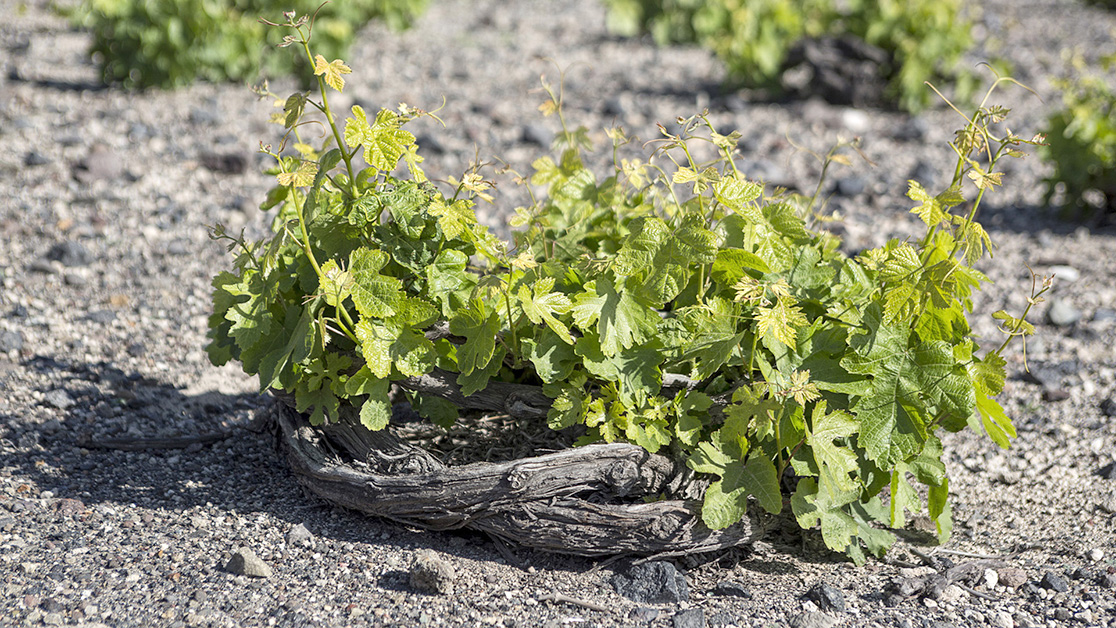Wine writers freely admit that trying to describe how a wine tastes is the classic “like dancing about architecture” folly. But amid the thousands of wine choices, people still want guidance. Even if the guidance has flaws, it still beats the “even a blind squirrel can find a nut sometimes” method.
There are three commonly used terms in wine reviews that cause controversy—OK, more than three, but today we are going to focus on “round,” “minerality,” and “masculine-feminine.” I will present my take on and use of the terms.
• Round. This is a descriptor of texture and mouthfeel rather than flavor. Round means there are amiable tannins, balancing not shrill acidity, integration of wine components, full and creamy texture. California merlots often are round because of their mellow tannins and smooth texture. New Zealand sauvignon blancs are not round thanks to their electric acidity and ramped-up citrus. In general, red wines are more likely to be round than white wines.
Round is intended as a positive trait in most cases. Sometimes—as with the New Zealand sauv blancs—you did not come to the wine for round. You wanted sharpness, edges that “cleanse the palate” after a bite of food.
I use the term “round,” but I also can argue against it. Round is overly broad and vague. It is extremely subjective. My “round” may not be your “round”—but that criticism can be leveled at almost all wine descriptor terms. The term can be paired with other descriptors for a fuller picture.
Texture: creamy, smooth, velvety, silky, supple. Structure: balanced, harmonious, well-integrated. Others: soft (low tannin levels), opulent (rich fruit flavors), plush (rich, luxurious texture).
For the record, I strive to reduce use of the term unless it is paired with further descriptors. I think that is a well-rounded approach.
• Minerality. Oh, boy, this gets wine geeks a’going. The controversy centers on sensory experience clashing with science. First, the science: wine vine roots do not absorb minerals and mineral tastes directly from rock minerals or limestone. Roots absorb dissolved chemical elements—nitrogen, calcium, iron, potassium. But they absorb these elements primarily from organic matter, not from rocks.
Still, wine writers rock on with a flood of related metaphors: flint, chalk, wet stone, crushed rock, gunflint, sea salt. It you want to know what we are talking about, you are told to lick a stone, suck on a pebble, or smell sidewalks after a rain. Not something most people do.
My minerality references hinge on three elements.
The main trigger for my use of “minerality” is salty flavors. Salt or salinity are real, measurable flavors in some wines, usually wines made from vineyards near the ocean or irrigated with water containing significant amounts sodium chloride and related salts. Salt is a mineral. It appears in the wine because dissolved in water it can be absorbed by the plant roots and leaves and found on the surface of grape skins and stems. Assyrtiko wine from the Greek island of Santorini is the poster child because of the salt captured by vines trained in the basket-shaped koulara system to acquire water from salty Aegean Sea fogs.

Wine vines cannot extract mineral tastes from rocks in the soil. They can, however, acquire salt minerals that exist in water. The key distinction: general “minerality” taste references lack scientific support. Salt absorption and its impact on taste are scientifically measurable. The mineral taste did not come from rocks, but from salt dissolved in water.
The second minerality trigger for me is the smell of wet rock or wet concrete after a rain—a smell scientists call “petrichor”—an earthy scent produced when rain falls on dry soil or rocks. Chablis is most famous “wet stone” wine. The reference is to a smell, not the taste of a rock in my mouth.
My third minerality trigger, and I admit to squishiness on this—and to a resolve to restrain use—comes from high acidity, a linear, mouth-watering feel. Also when there is no malolactic conversion and low fruitiness or oak influence (in science terms, when fruit esters and terpenes are subdued).
Supporters of the “minerality” term argue it is a useful, if vague, sensory category. It is a shorthand for a style—acidic, lean, unsweetened by oak or overt fruit. Supporters admit “minerality” has nothing to do with actual minerals extracted from rocks, then point out that people heavily involved in wine—winegrowers, winemakers, wine experts—perceive something. Wine writer Terry Theise described minerality as “an unnamable thing that is definitely there but hasn’t yielded to explanation.”
Critics argue that “minerality” is romantic nonsense lazy wine writers use to fill out the required word count for their comment. It is a substitute for more specific descriptions. Scientists emphatically assert that whatever you think minerality is, it is not you tasting minerals extracted from rocks where the vines grew.
Bottom line: “minerality” is a subjective metaphor. Most wine descriptors are subjective metaphors. It is not easy to use words to describe an individual perception of taste, smell, texture. It can, however, be fun to take one side or the other and argue through the evening over a charcuterie board and bottles of quality wine.
• Masculine-feminine. Finally, a wine descriptor I avoid and one I can trash. The cliché is “masculine wines” are bold, powerful, tannic, structured, full-bodies, assertive, robust. “Masculine wines” resemble the manly men who drink them. Think cab, barolo, syrah. “Feminine wines” are light, soft, delicate, elegant, silky, supple. Think rosé, pinot noir, pinot grigio. Tannin structure is the usual dividing line, followed by body or weight in the mouth and assertive flavors.
Well, screw that. The terms are sexist, problematic, and outdated. Wine is not black or white, male or female, it is endless shades of gray and a rainbow of colors. The masculine-feminine meaning as a wine descriptor relies on tired and grossly inaccurate gender stereotypes.
Guys, in the third decade of the 21st century, this is a stupid fight to pick. You run a risk that if you pick this masculine-feminine fight, the woman who is offended could whip your ass. Just sayin’.
Tasting notes:
• Franciscan Estate Chardonnay, California 2022: Clean, vivacious, delicious chardonnay unencumbered by oak or malolactic conversion. Slight sweetness—hugs border between dry and off-dry. Fruit forward with emphasis on freshness rather than complexity. $13-15
Link to my review
• Maison Sinnae Chusclan Elements Sol, Côtes du Rhône Villages 2021: Fresh, balanced, vibrant with core of red fruits. Well behaved tannins and balancing acidity make this a fun, easy drinking, uncomplicated, straightforward pleasure. Excellent QPR. $17 Link to my review
• Gigondas La Cave Vacqueyras Beaumirail 2022: Elegant with generous, delicious, seductive layers of fruit, especially after some air exposure. Faithful presentation of Gigondas GSM style and terroir. $22-26 Link to my review
• Wente Vineyards Cabernet Sauvignon, Livermore Valley, Wetmore Vineyard 2021: Superb, especially attractive QPR pour; drinks like cabs premium Napa-Sonoma cabs. Dark fruit flavors predominate. Decanting reveals structure, depth, length, ameliorates significant tannins. Widely available. $24-35 Link to my review
Last round: Judging by the price, this wine pairs best with a Swiss bank account where you hide your money or a trust fund your rich grandfather set up for you with money from a Swiss bank account where he hid his money. In any event, if you are pouring, I am drinking.



